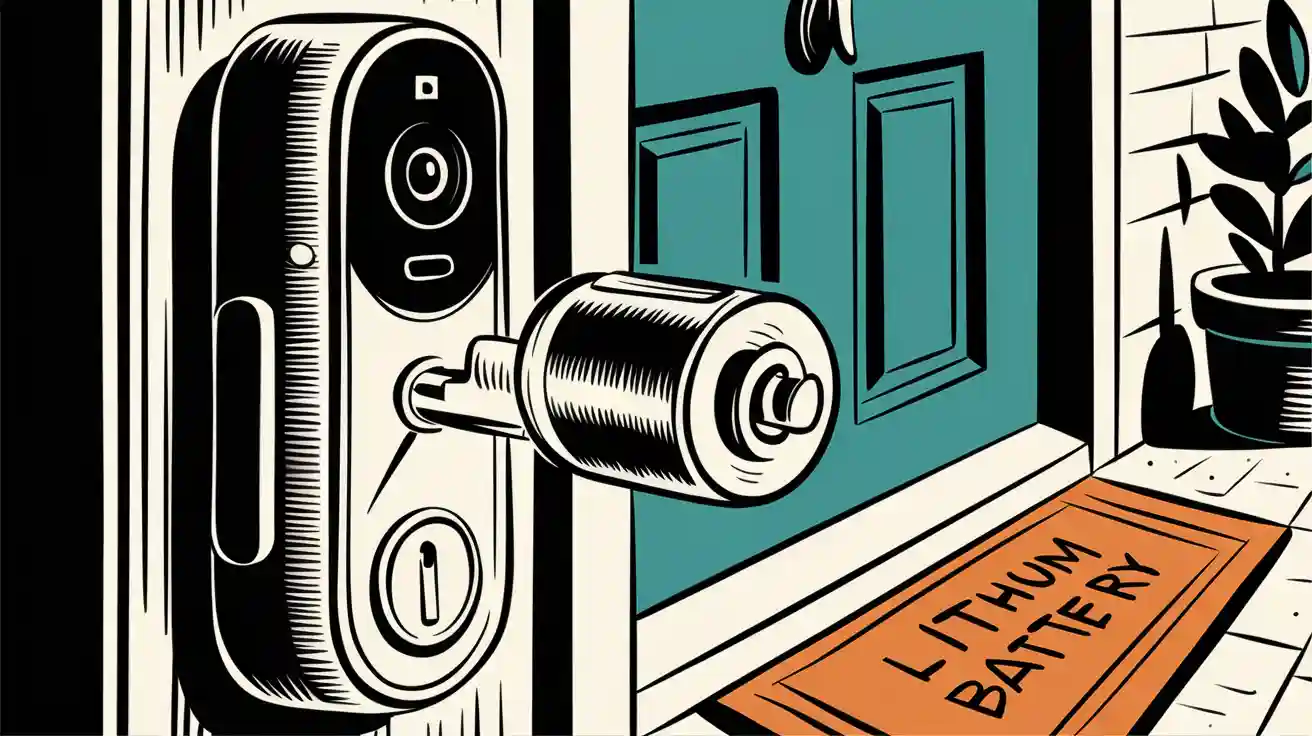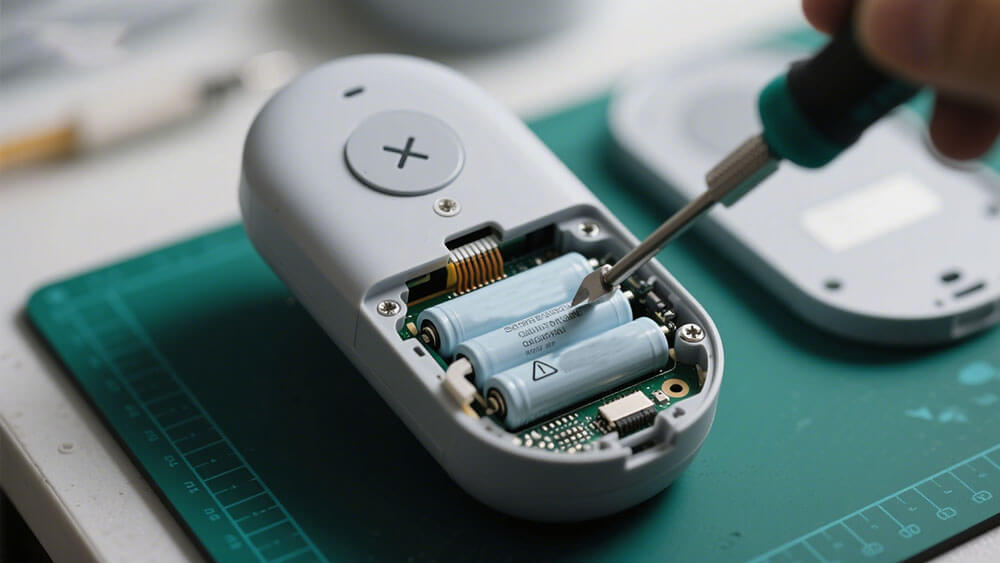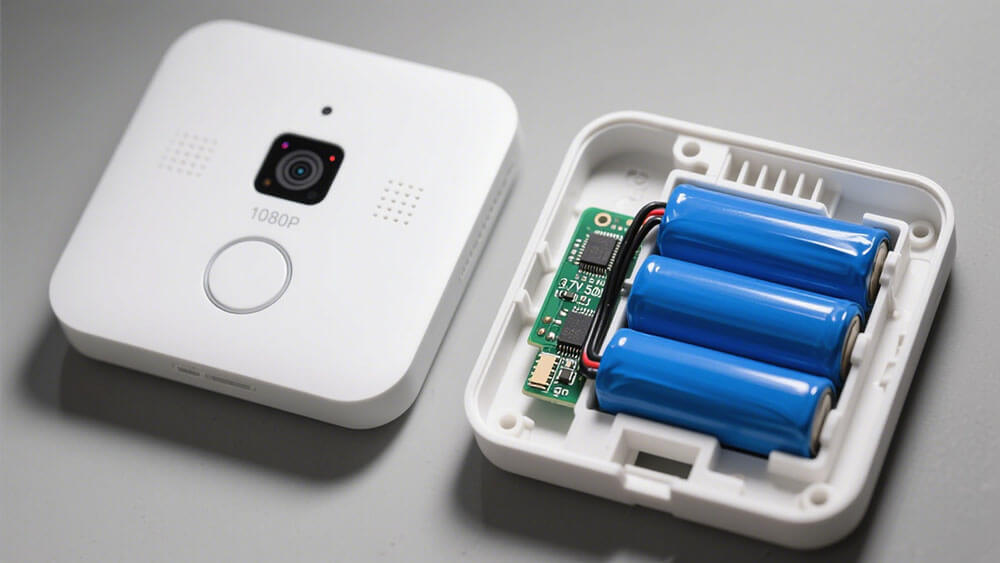
When you choose a lithium battery for smart doorbell applications, you gain unmatched reliability and a long service life. Wireless video doorbells rely on this technology to provide installation flexibility and simple maintenance. You meet the demands of smart home integration by ensuring stable power delivery and minimizing interruptions. Smart home integration becomes seamless with a battery-powered doorbell that supports advanced features and reduces maintenance cycles.
Key Takeaways
Lithium batteries offer high energy density, enabling smaller, lighter smart doorbells with longer battery life and support for advanced features like HD video and motion detection.
These batteries provide a long lifespan with many charge cycles, low self-discharge, and no memory effect, reducing maintenance and ensuring reliable smart home integration.
Stable voltage output and built-in safety features keep smart doorbells running smoothly and safely in various temperatures, supporting continuous performance and protecting the battery.
Part 1: Lithium Battery for Smart Doorbell: Key Advantages

1.1 High Energy Density
You need a battery solution that maximizes power without increasing size or weight. Lithium battery for smart doorbell applications delivers superior energy density, making your devices smaller, lighter, and more efficient. This advantage allows you to design battery-powered doorbell systems that offer extended battery life and seamless smart home integration.
Battery Chemistry | Energy Density (Wh/kg) | Key Notes on Energy Density and Usage in Smart Doorbells |
|---|---|---|
150 – 250 | Approximately twice the energy density of alkaline; suitable for long-term, high-performance applications like smart doorbells. | |
Alkaline | 80 – 100 | Lower energy density; typically single-use; less suitable for long-term smart doorbell use. |
NiMH | N/A | Higher energy density than NiCd but no exact value provided; rechargeable but less energy dense than lithium. |
You achieve longer battery life and reduce the frequency of maintenance visits. High energy density supports advanced smart features such as HD video streaming, motion detection, and wireless connectivity. This efficiency is essential for smart home compatibility and integration with other security devices.
Tip: High energy density means you can offer compact designs without sacrificing battery life, which is critical for modern smart doorbell integration.
1.2 Long Lifespan
You want a battery that lasts through countless charge cycles and minimizes downtime. Lithium battery for smart doorbell systems provides a long lifespan, often exceeding 300-500 full charge-discharge cycles before significant capacity loss. You benefit from low self-discharge rates, so your battery-powered doorbell retains its charge even during periods of inactivity.
No memory effect: You can recharge lithium batteries at any time without reducing battery life or capacity.
Low self-discharge: Your smart doorbell remains ready for use, even after months of standby.
Extended cycle life: You support smart home integration with devices that require infrequent battery replacement.
You reduce operational costs and improve customer satisfaction by offering reliable, long-lasting power. The extended battery life ensures that smart features such as two-way audio, night vision, and real-time alerts remain available for longer periods. This reliability is vital for smart home compatibility and integration with comprehensive security systems.
1.3 Stable Voltage
You need consistent power delivery to maintain the performance of smart features. Lithium battery for smart doorbell applications provides stable voltage output throughout the discharge cycle. This stability ensures that cameras, Wi-Fi modules, and processors operate reliably, supporting uninterrupted smart home integration.
Voltage stabilizers maintain a constant voltage level, preventing overcharging and undercharging.
Stable voltage supply reduces risks of overheating and battery damage.
Consistent power delivery ensures efficient charging cycles and reliable device operation.
Reduced heat generation enhances battery safety and longevity.
Lithium batteries support advanced smart features such as facial recognition, motion detection, and high-resolution video streaming. You avoid unexpected shutdowns and maintain continuous smart home compatibility. Stable voltage output is essential for integration with other smart devices, ensuring seamless operation across your security ecosystem.
1.4 Environmental Benefits and Industry Trends
You contribute to sustainability by choosing lithium battery for smart doorbell solutions. Lithium batteries have a longer lifespan and higher energy density, resulting in fewer batteries used and discarded over time. This reduces waste and lowers CO₂ emissions compared to alkaline batteries. Proper disposal and recycling prevent hazardous leaks and recover valuable materials. For more on sustainability, visit Our Approach to Sustainability. If you require information on conflict minerals, see the Conflict Minerals Statement.
Industry trends show a clear shift toward lithium battery adoption in smart doorbell markets. You benefit from technological advancements, declining costs, and growing consumer demand for smart home integration. The following table highlights key industry trends:
Industry Trend Category | Supporting Evidence |
|---|---|
Technological Advancements | Improved battery life and energy efficiency; advanced AI-powered analytics; higher resolution cameras; improved night vision; wider field-of-view lenses |
Smart Home Ecosystem Integration | Increasing standard integration with other smart home security devices, enabling automation and convenience |
AI and Machine Learning | Enhanced object recognition, facial recognition, behavioral analytics, real-time alerts, and video analytics |
Cost and Affordability | Declining cost of lithium batteries making devices more affordable, especially in emerging markets |
Consumer Demand | Growing interest in home security, convenience, and remote monitoring |
Government and Infrastructure | Smart city initiatives, increased internet penetration |
Regional Market Dynamics | High adoption in North America and Europe due to early tech acceptance and disposable income; rapid growth in Asia-Pacific driven by urbanization and rising incomes |
Data Privacy and Security Concerns | Increased focus on data encryption and user control features driven by consumer concerns and regulations |
Product Innovation and Competition | Continuous improvements in product features and capabilities driving market competition and innovation |
You position your products at the forefront of smart home integration by leveraging lithium battery technology. You meet the demands of modern security systems and support the evolution of smart features in battery-powered doorbell solutions.
Part 2: Wireless Battery Video Doorbells: Performance and Safety

2.1 Consistent Power in All Conditions
You rely on wireless battery video doorbells to deliver dependable performance, even in challenging environments. Lithium batteries maintain optimal operation across a wide temperature range, making them ideal for outdoor installations. You can expect reliable power delivery from -4°F (-20°C) up to 122°F (50°C). Devices equipped with lithium batteries continue to function during cold snaps and heat waves, supporting uninterrupted smart home integration.
Lithium batteries operate best near 75°F (25°C), but you benefit from their ability to work in extreme conditions.
In freezing weather, battery life decreases temporarily. Charging pauses below 32°F (0°C) to protect the battery, so you should recharge indoors if needed.
In hot climates, prolonged exposure to heat may reduce battery lifespan. Devices may lower video quality or shut down to prevent damage.
You receive notifications if temperatures fall below 3°F (-16°C) or rise above 131°F (55°C). Automatic shutdown protects the battery until conditions normalize.
Parameter | Temperature Range | Notes |
|---|---|---|
Minimum Operating Temp | -4°F (-20°C) | Devices operate normally down to this temperature; battery life reduces near freezing. |
Maximum Operating Temp | 122°F (50°C) | Prolonged exposure to heat can reduce battery life; device may shut down if too hot. |
Charging Below Freezing | Below 32°F (0°C) | Device stops charging; USB charging indoors recommended. |
Cooling Behavior | Above 122°F (50°C) | Device may reduce performance or shut down to protect battery. |
You ensure wireless video doorbells remain functional and secure, regardless of seasonal changes. This resilience supports continuous motion detection and real-time alerts, which are essential for comprehensive smart home security.
2.2 High Power Output
You need wireless battery video doorbells that support advanced features without compromising performance. Lithium batteries provide the high power output required for continuous video surveillance, motion detection, and two-way audio. You benefit from stable power delivery that enables automatic switching between day and night modes, ensuring clear video quality at all times.
Infrared night vision activates automatically in low light, maintaining video quality and security.
Efficient power management extends battery life, allowing longer operation on a single charge.
The IMILAB battery video doorbell lasts up to 180 days in standard mode, depending on usage and environmental factors.
You achieve seamless smart home integration with wireless video doorbells that deliver reliable motion detection and real-time alerts. Stable power output ensures uninterrupted video quality, even during peak usage periods. You can monitor entrances, communicate with visitors, and receive instant notifications, all supported by the robust performance of lithium battery packs.
2.3 Safety Features
You prioritize safety when selecting lithium battery packs for wireless battery video doorbells. Modern lithium batteries include advanced protection mechanisms to minimize risks such as overheating, fire, or electrical faults. You benefit from integrated Battery Management Systems (BMS) (learn more about BMS), which monitor voltage, temperature, and current to maintain safe operating conditions.
Custom BMS provides over-voltage, short-circuit, and temperature protection.
Chargers feature overcharge protection, preventing thermal runaway.
Devices monitor battery temperature and stop charging or shut down if unsafe conditions arise.
Short-circuit protection and proper insulation reduce fire risk.
You avoid hazards by following manufacturer guidelines, using only specified batteries and accessories, and replacing batteries promptly when needed.
Battery Type | Safety Features Included | Maintenance Requirement | Integration Flexibility | Performance in Extreme Conditions |
|---|---|---|---|---|
Lithium-ion | BMS, overcharge/overdischarge, temp monitoring, short-circuit protection | Moderate | High | Excellent |
Alkaline | Basic insulation, no active management | Frequent replacement | Moderate | Poor |
NiMH | Basic protection, limited management | Frequent replacement | Moderate | Fair |
You find lithium batteries easy to integrate into modern wireless video doorbells. Their compact size and flexible design support wireless installation and compatibility with advanced features. You reduce maintenance cycles and enhance device reliability, making lithium battery packs the preferred choice for smart home integration.
Tip: Regular inspection and proper handling of lithium battery packs further improve safety and extend device lifespan.
You gain a competitive edge by choosing lithium battery packs for smart doorbells. High energy density, long battery life, stable performance, and advanced safety features set your products apart. Manufacturers report battery life lasting months, reducing maintenance. For tailored solutions, consult Large Power’s custom battery experts.
FAQ
1. How do lithium battery packs improve motion detection in smart doorbells?
Lithium battery packs deliver stable voltage, ensuring motion detection sensors operate reliably. You maintain accurate alerts and reduce false alarms, supporting comprehensive smart home security for your clients.
2. What lithium chemistries does Large Power recommend for wireless video doorbells?
Large Power recommends LiFePO4, NMC, and LCO chemistries. These options provide high energy density, long cycle life, and stable voltage, ideal for motion detection and advanced doorbell features. Consult our experts for custom batery solutions.
3. Can lithium battery packs handle frequent motion detection events?
You can rely on lithium battery packs to support frequent motion detection triggers. High discharge rates and efficient power management ensure uninterrupted operation, even during periods of heavy activity.






